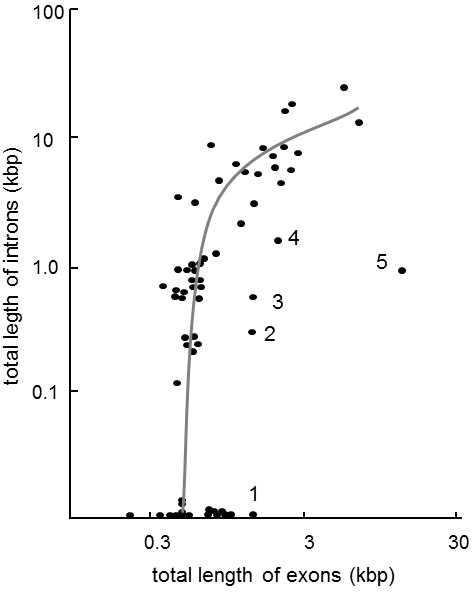XI.6.3 Internal gene periodicity may be a by-product of molecular drive
An alternative explanation of the periodicity of present-day genes is that they were formed only secondarily, i.e. without any connection to the origin of genes, as a consequence of the action of molecular drive.This hypothesis is far from being as interesting as the previous two hypotheses from the viewpoint of the evolution of genes; however, it must be admitted that it is quite legitimate and deserves consideration.
Molecular driveentails a number of mechanisms connected with replication, recombination and repairing of nucleic acids in present-day organisms.These mechanisms prefer the formation of certain sequential motifs without regard to the degree to which these motifs contribute to the viability of the organisms.In particular, two phenomena could be important in the origin of internal periodicity of genes, slipped-strand mispairing, occurring prior to replication or reparation, and uneven crossing-over in recombination processes.
Slipped‑strand mispairingleads first to local short-term denaturing of the double-helix DNA molecule and subsequently to illegitimate renaturation of the segment of the strand, not with the original complementary part of the opposing strand, but with some other area, usually an adjacent area containing the complementary base (see Fig.VI.7).If this is followed by replication of the particular DNA section, then either reproduction or deletion of a certain sequential motif occurs.Strand slippage can occur only in areas where two or more repetitive sequence motifs are located one behind the other, where the probability of this event is inversely proportional to the length of these motifs and directly proportional to the number of repetitions.A similar mechanism is active in the second of these processes, i.e. uneven crossing-over.This entails illegitimate pairing between mutually complementary but simultaneously nonhomologous sections of two chromosomes (see Fig. VI.5).This

Fig. XI.5 Correlation between the overall length of exons and introns in the individual genes. It is apparent from the graph that, to a certain size (500 pairs of bases), genes do not contain introns. Some larger genes also lack introns, e.g. the genes for histones. In genes with a size of 500 to 1000 pairs, the overall length of the introns increases very rapidly, and then it increases much more slowly. Genes denoted by numbers 1-5 are (in the following order): human α-tubulin, yeast actin, sea urchin actin, drosophilla actin and silkworm fibroin. Modified according to Naora and Deacon (1982).
leads to duplication of a certain section on one chromosome and its deletion on another chromosome.Recombination processes can apparently occur only in certain phases of the cell cycle, so that they cannot be as important as strand slippage for the evolution of internal periodicity.However, in contrast to strand slippage, the probability of their occurrence depends too much on the length of the participating sequential motifs, so that they can apparently be important in the reproduction of longer sequential motifs.
At the present time, it is not completely clear to what degree molecular drive and to what degree natural selection is responsible for the presence of internal periodicity in present-day genes.It is highly probable that a combination of the two processes was important.Only molecular drive can be important in the areas of DNA not encoding genes; internal periodicity can be of functional importance in the area of the genes and can thus be a result of natural selection.
